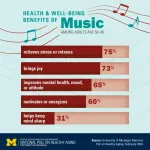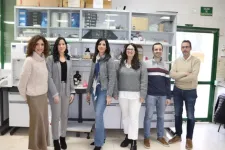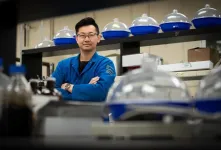(Press-News.org) Geographic sorting along ideological lines is on the rise. Counties and regions of the United States differ in political ideology. But do they differ in personality as well? Further, are people who ‘fit’ their communities healthier, happier, or more highly achieving than those who do not?
In the context of these growing divisions and to address this question, a study by Florida Atlantic University’s Kevin Lanning, Ph.D., senior author and a professor of psychology and data science in the Harriet L. Wilkes Honors College on FAU’s John D. MacArthur Campus in Jupiter, and collaborators used data from the Synthetic Aperture Personality Assessment to investigate the impact of person-community fit on education, health and well-being.
First, they assessed fit using the traditional methods of response surface analysis and profile similarity. However, in each of these approaches, scores for individuals are typically compared with community averages, raising interpretive challenges because there is inevitably greater variability among individuals than there is among communities.
As such, Lanning and his research team introduced a novel approach to conceptualizing person-community fit, predicated on the idea that communities, like persons, are diverse, and can include multiple environmental niches. In these analyses, researchers illustrate this idea with a simple typology, one in which they assign people to types based on their single-most extreme score across the set of the big five traits: openness to experience, conscientiousness, extraversion, agreeableness and neuroticism.
For example, an ‘extraverted’ type is someone for whom the average response across the extraversion items is positive and relatively more extreme than that for any of the remaining traits; similarly, a ‘stable’ type is someone whose most extreme average response was low in neuroticism. Communities were then described in terms of the percent of people in each of the types.
Results of the study, published in the journal Current Research in Ecological and Social Psychology, showed that whereas traditional approaches have typically found only modest personality differences between communities, the new typological approach revealed more substantial effects. For example, the percentage of open-minded people in Manhattan is roughly twice that of people in Detroit, while those in Detroit are twice as likely as Manhattanites to be classified as conscientious.
In Palm Beach and Broward counties, the proportions of open and conscientious people are roughly the same. Among counties with more than 500 respondents, Bexar County, San Antonio had the highest proportion of agreeable people, while Manhattan had the highest proportion of open persons, but the lowest proportion of people who were agreeable or conscientious.
“It’s important to note that when comparing different counties, small counties are inevitably more likely to show up at the extremes. In addition, our sample is unlikely to be representative of most counties. For both of these reasons, comparisons between individual counties should be made with caution,” said Lanning.
Lanning's team also found some support for the claim that people whose personalities match many others in the community are happier (higher in well-being), more likely to engage in healthful behaviors, and attain higher levels of schooling relative to their parents.
In short, communities are diverse in terms of personality as well as demographics, and having like-minded people in one's community is associated with positive outcomes.
“Just as the ethnic character of a community can be described by proportions of different ethnic groups, the psychological character of a community may, perhaps, best be understood by a set of proportions of psychological types,” said Lanning. “To the extent that communities are diverse, people can ‘fit’ in multiple ways. One way to capture this idea is by describing both persons and communities in terms of types.”
Study co-authors are Geoff Wetherell, Ph.D., an assistant professor in the Department of Psychology within FAU’s Charles E. Schmidt College of Science; Gwen Gardner, Ph.D., University of Toronto; Sara Weston, Ph.D., and David Condon, Ph.D., both with the University of Oregon.
- FAU -
About Florida Atlantic University:
Florida Atlantic University, established in 1961, officially opened its doors in 1964 as the fifth public university in Florida. Today, the University serves more than 30,000 undergraduate and graduate students across six campuses located along the southeast Florida coast. In recent years, the University has doubled its research expenditures and outpaced its peers in student achievement rates. Through the coexistence of access and excellence, FAU embodies an innovative model where traditional achievement gaps vanish. FAU is designated a Hispanic-serving institution, ranked as a top public university by U.S. News & World Report and a High Research Activity institution by the Carnegie Foundation for the Advancement of Teaching. For more information, visit www.fau.edu.
END
One of the most important components of satellites that enable telecommunication is the waveguide, which is a metal tube for guiding radio waves. It is also one of the heaviest payloads satellites carry into orbit. As with all space technology, reducing weight means reducing the amount of expensive and greenhouse gas-producing fuel it takes to launch a rocket, or increasing the number of devices carried by the same rocket to space. Researchers from Drexel University and the University of British Columbia are trying to lighten the load by creating and testing a waveguide made ...
More than half of Americans do not currently meet the daily recommendation of 5–7 ounce equivalents^ of nuts and seeds per week.1
One possible contributor to such low intakes of tree nuts could be a fear that the calories or fat composition of tree nuts leads to weight gain.
For example, past studies suggest that up to 87% of Americans think eating nuts can lead to weight gain due to their dietary fat content2 despite scientists confirming that eating nuts every day, including pistachios,3 can be an achievable and simple strategy to ...
A more accurate way of identifying underground nuclear tests, including those conducted in secret, has been developed by researchers at The Australian National University (ANU).
The new method could help international observers better identify tests carried out by countries or actors known to possess nuclear weapons, as well as providing new information about those suspected of being armed.
According to lead author Dr Mark Hoggard, in the aftermath of the Cuban Missile Crisis and Partial Test Ban Treaty in the 1960s, testing of nuclear ...
DALLAS, Feb. 6, 2024 — Five promising scientific researchers will advance their work to better understand and treat the most common birth defect in the U.S., congenital heart defects (CHDs), thanks to joint financial support from the American Heart Association and The Children’s Heart Foundation's Congenital Heart Defect Research Awards program.
To date, the American Heart Association, celebrating 100 years of lifesaving service and devoted to a world of healthier lives for all, and The Children’s Heart Foundation, dedicated to funding congenital heart defect research, have ...
HOUSTON – (Feb. 7, 2024) – Artificial intelligence is good at many tasks involving data in the form of text, audio and images, including face recognition and text summarization.
“AI is an amazing tool and has been extended over less conventional domains, such as climate data defined on spheres (representing the Earth) and traffic data defined on road networks,” said Santiago Segarra, assistant professor of electrical and computer engineering and statistics.
With his five-year, $599,138 CAREER Award from the National Science Foundation, Segarra intends to study the use of graphs to represent these ...
Whether it’s singing in a choir, playing the living room piano, joining in hymns at church, or just whistling along with the radio, a new poll finds that nearly all older adults say music brings them far more than just entertainment.
Three-quarters of people age 50 to 80 say music helps them relieve stress or relax and 65% say it helps their mental health or mood, according to the new results from the University of Michigan National Poll on Healthy Aging. Meanwhile, 60% say they get energized or motivated ...
Sewage sludge is the solid waste resulting from wastewater treatment. According to data from the Ministry for the Ecological Transition and the Demographic Challenge, 1.2 million tons of this waste were produced in Spain in 2021 alone, and its management is a growing problem. Although some of it may have agricultural applications, such as being used as fertilizer after composting, its high concentration of metals limits its use, generating environmental problems.
A new study has managed to give this waste a second life, turning it into activated carbon, a product boasting ...
Although change-oriented behaviors are critical to high quality public service delivery, encouraging employees to embrace and pursue change in the public sector is difficult. Even with sufficient job autonomy–the principal antidote to resistance to change in the public sector literature–public servants may still lack the incentives, skills, information, and sense of security necessary to engage in proactive change-oriented behavior. Consequently, while job autonomy is undoubtedly important, it alone is not enough, as demonstrated by the many cases in which autonomy fails to lead to change and work process improvements. Given the importance of attitudes ...
For the first time, a hydrogel material made of nanocellulose and algae has been tested as an alternative, greener architectural material. The study, from Chalmers University of Technology in Sweden and the Wallenberg Wood Science Center, shows how the abundant sustainable material can be 3D printed into a wide array of architectural components, using much less energy than conventional construction methods.
The construction industry today consumes 50 percent of the world’s fossil resources, generates 40 percent of global waste and causes 39 percent of global carbon dioxide emissions. There is a growing line of research into biomaterials and their applications, in ...
When it comes to making fuel from plants, the first step has always been the hardest — breaking down the plant matter. A new study finds that introducing a simple, renewable chemical to the pretreatment step can finally make next-generation biofuel production both cost-effective and carbon neutral.
For biofuels to compete with petroleum, biorefinery operations must be designed to better utilize lignin. Lignin is one of the main components of plant cell walls. It provides plants with greater structural integrity and resiliency from microbial attacks. However, these natural properties of lignin also make it difficult to extract and utilize ...









